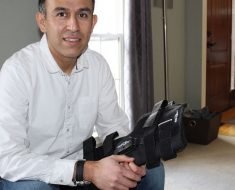
With running, proper form is essential for everything from desired speed to injury prevention. But for many people, muscle memory has locked in less-than-perfect form.
A very simple technique, popularized in the 19th century by chemist-turned-runner W.G. George and re-introduced a few years ago by reporter and author Christopher McDougall, offers a reset. Known as the 100-Up, it involves two stages.
First you need to master the Minor—30 knee raises, much like marching in place, done with perfect form.
Stand with shoulders over hips over ankles, feet about eight inches apart. Then bring your left knee forward and up to hip level as you press your left elbow back behind you. Return to start and repeat up to 30 times. Then repeat with the right knee. Be sure to land lightly on the ball of your foot, not the heel. It’s a rhythmic movement: Don’t lock joints or hunch forward for momentum.
Seems simple enough, but you may only be able to do 10 before your posture slips or you can’t raise your knee high enough. George described it as balancing on one leg while working the other. A current variation is to alternate legs and build up to 100 raises in total, 50 per side.
Once you can correctly do the 30 with each leg, repeat the exercise at a faster speed for the second stage, the Major.
Balance on the balls of your feet, heels just off the ground and your head and body tilted very slightly forward. Spring from the toes, bringing one knee to the level of the hip, then letting the foot fall back to its original position. Repeat with the other leg and continue raising and lowering the legs alternately. This action is exactly that of running except that you do it in place rather than moving forward. Again, build gradually until you can do 100 with perfect form.
Source: Read Full Article





